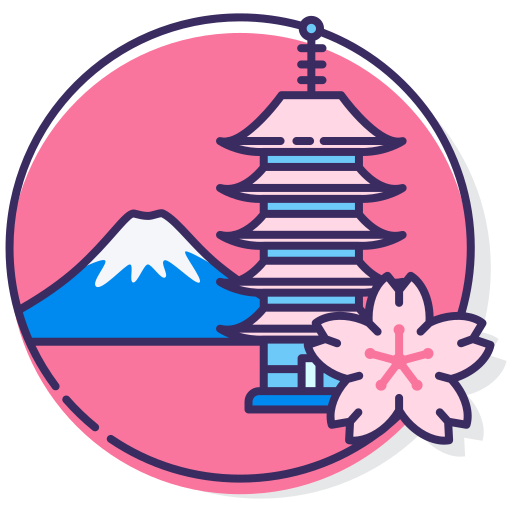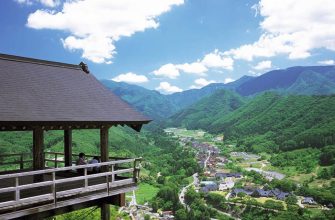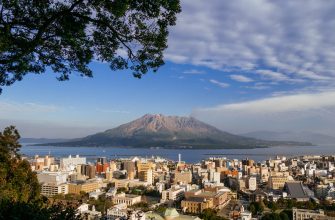Japanese mythology is rich with mythical creatures that have become an integral part of the country’s folklore. These creatures have influenced Japan’s literature, arts, and religious practices. Each creature has its own story and place within Japanese mythology, and they symbolize different aspects of life and the environment.
From the grandiose dragon-like ryū to the terrifying Oni, and countless other spirits that roam idyllic and ominous landscapes, these creatures offer a glimpse into the values, fears, and hopes of the Japanese people across time. The interaction of mythical creatures with humans in folklore has a long-lasting cultural impact, and their legacy continues to influence Japanese culture to this day. This article will explore the origins and evolution of Japanese mythology, major deities and sacred beings, legendary monsters and spirits, heroes and villains in folklore, sacred places and artifacts, cultural impact of mythical creatures, interactions with human society, supernatural phenomena and explanations, and the legacy of Japanese mythical creatures.
Origins and Evolution of Japanese Mythology
Japanese mythology is a rich tapestry that intertwines ancient tales with the nation’s spiritual beliefs. The foundation of this lore can be found in revered texts such as the Kojiki and Nihon Shoki.
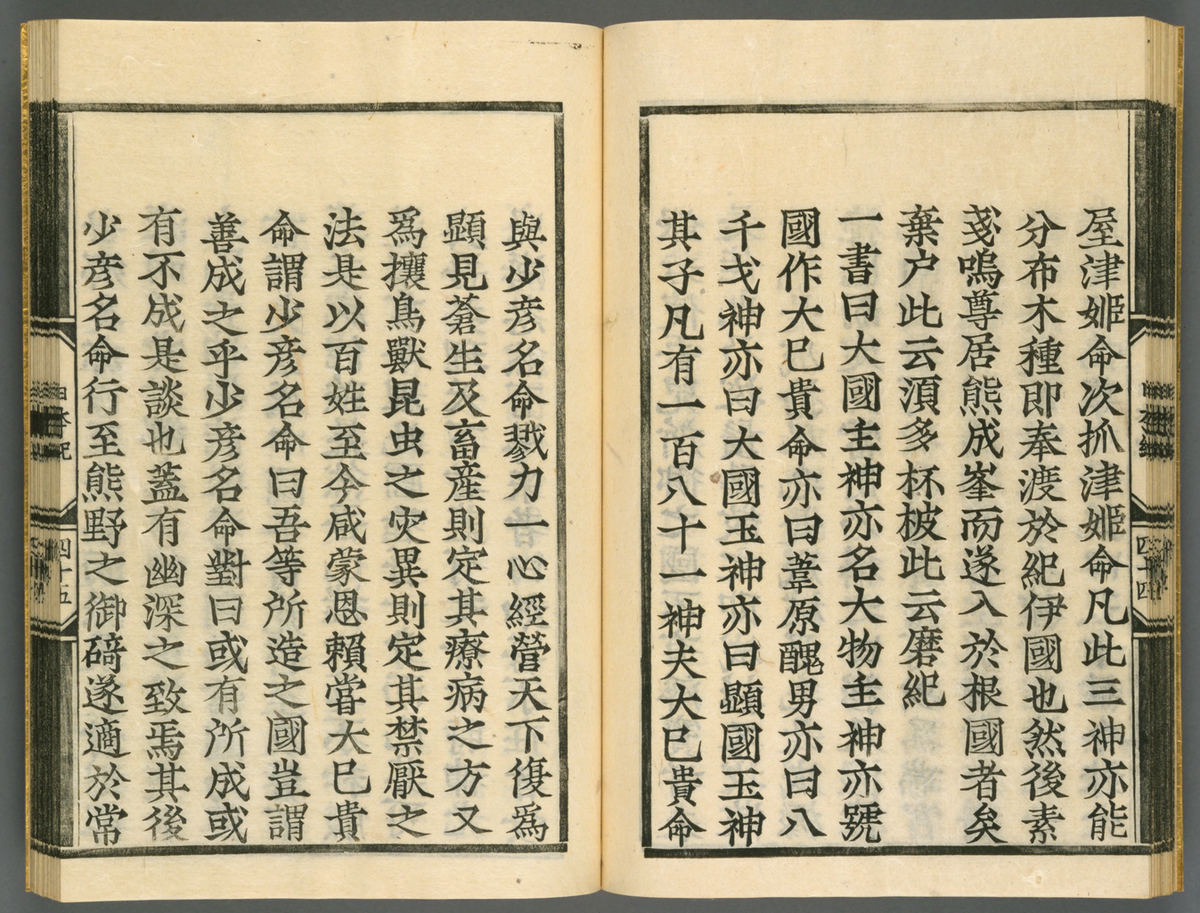
Mythological Texts
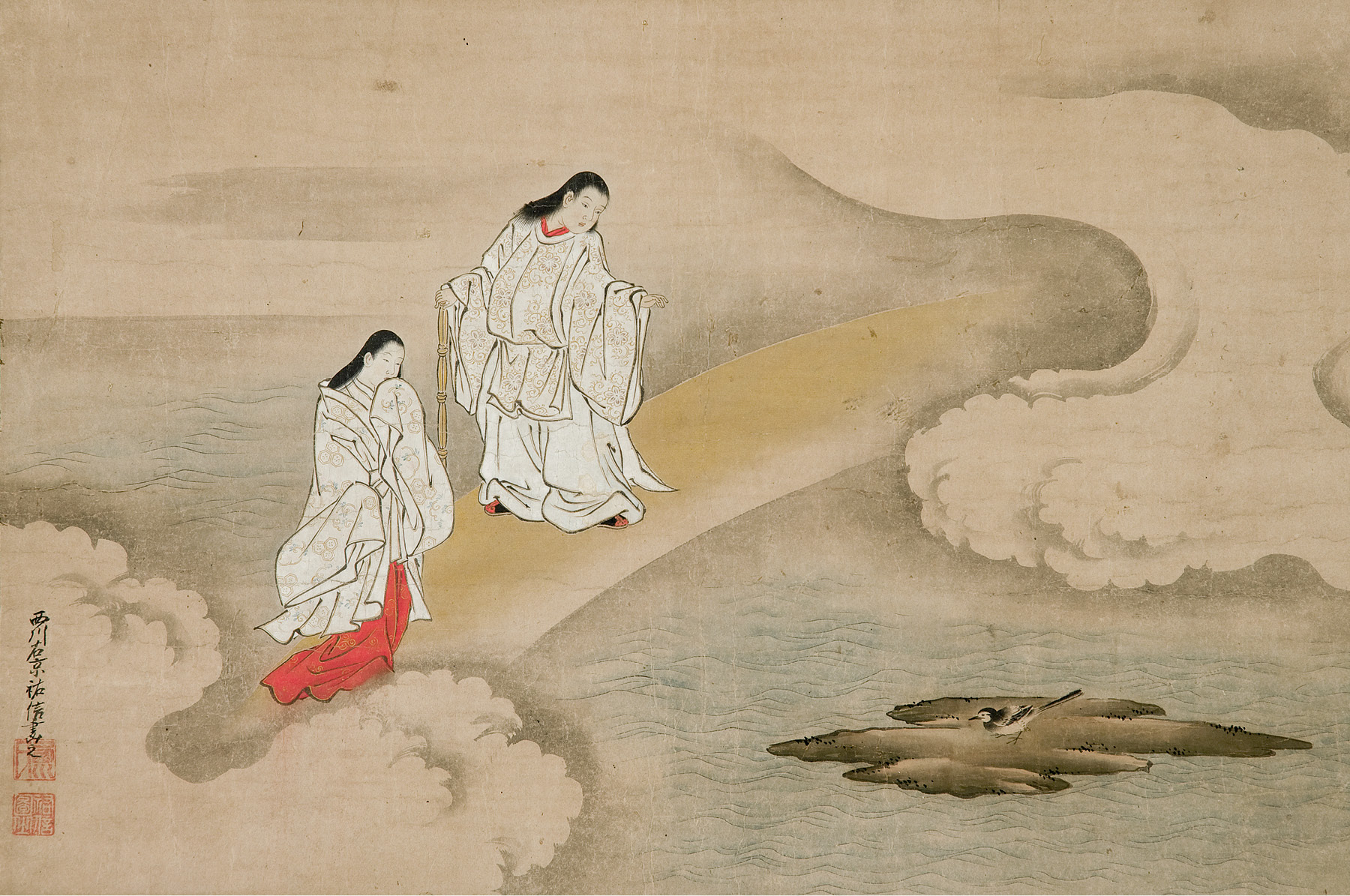
The Kojiki, dating back to 712 CE, is Japan’s oldest written document. It details the creation myth and features deities like Izanagi and Izanami, who gave birth to the islands of Japan. The Nihon Shoki, written in 720 CE, expands on these myths with extra context and commentary. It solidifies the narrative of the divine lineage of emperors and offers insights into the Shinto religion.
Religious Influences

Two primary religious practices have influenced Japanese mythology: Shinto and Buddhism. Shinto is Japan’s indigenous spirituality, venerating Kami, the spirits or deities that inhabit living things and natural phenomena. Kami are integral to understanding Japanese folk tales, where they often interact with humans and the world around them.
Buddhism arrived in Japan via Korea and China by the 6th century. The intersection of Shinto with Buddhism created a syncretic religious landscape in Japan. Sometimes, Kami were seen as manifestations of Buddhist deities. Over time, Buddhism incorporated Shinto gods into its pantheon.
Understanding the influences of Shinto and Buddhism is crucial to understanding Japanese mythology. The tales and beliefs of the ancient Japanese people continue to inspire and captivate people around the world.
Major Deities and Sacred Beings
Understanding the major deities and sacred beings in Japanese mythology provides insight into the cultural fabric of Japan. This section will explore the most important and influential deities and beings in Japanese mythology.
Sun Goddess and Creation Myths
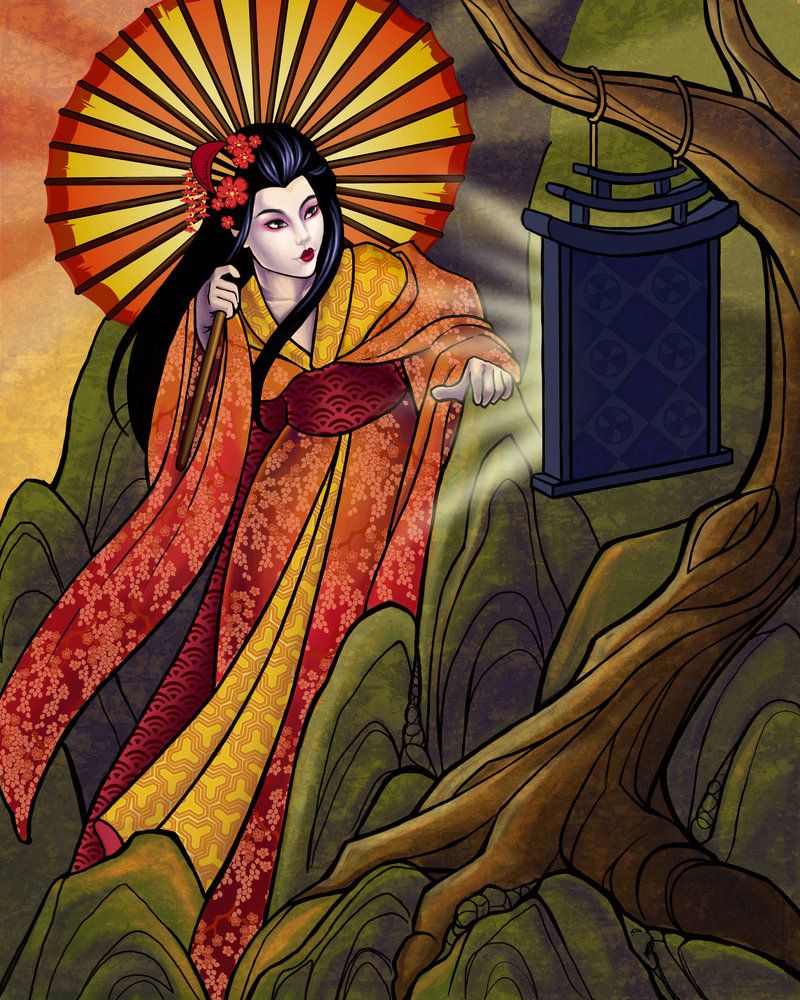
The most important deity in Japanese mythology is Amaterasu, the Sun Goddess. She is the central figure in the Shinto religion and Japanese creation myths. The imperial family credits her as a deity of utmost importance, giving life and warmth to the world symbolizing power. Her mythical tale includes her retreat into the Amano-Iwato cave, which plunged the world into darkness. She was lured out, bringing light back to the earth.
Heaven and Underworld Deities
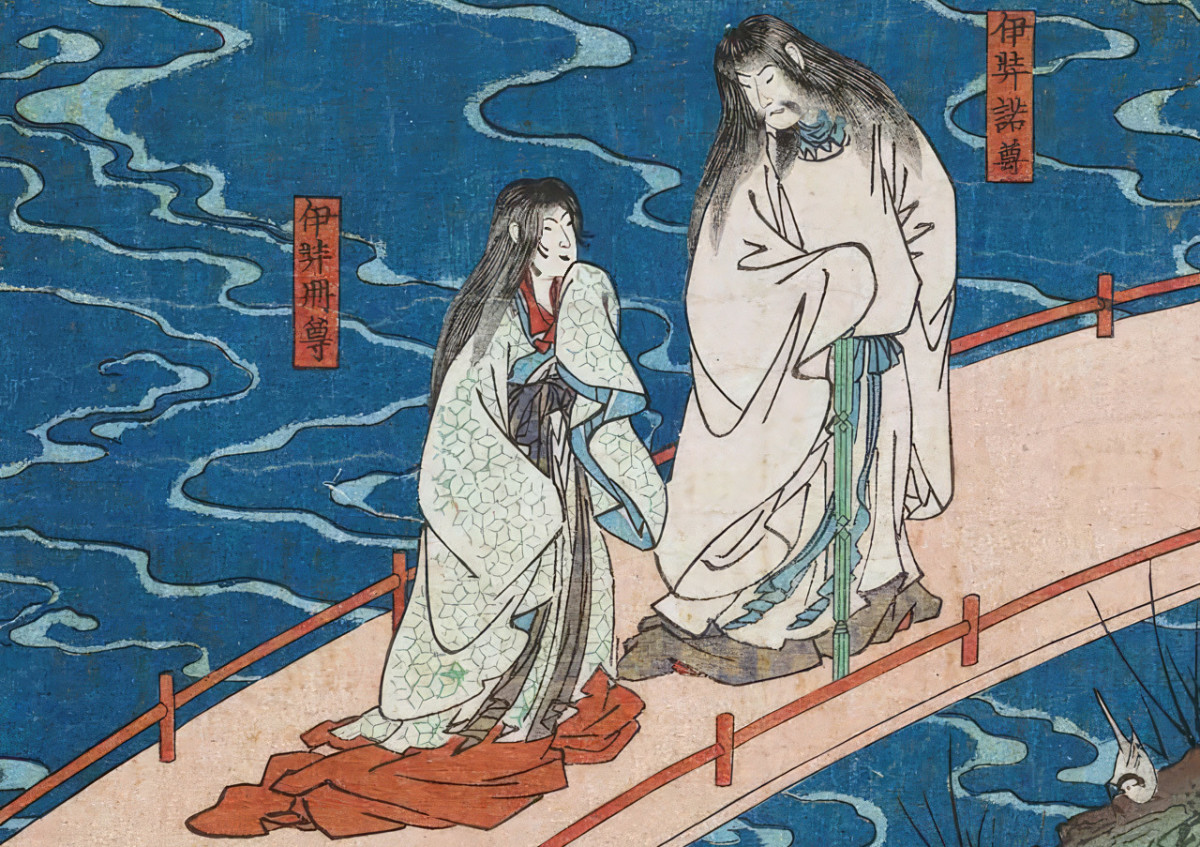
Izanagi (male) and Izanami (female) are pivotal deities in Japanese mythology. They created the Japanese archipelago and many Kami, including gods of elements like forests, mountains, rivers, and lakes. After Izanami’s death during childbirth, Izanagi followed her to Yomi, the land of the dead. His failure to bring her back resulted in the birth of several other significant Kami, including Susanoo, the fierce storm god, and the Moon God, Tsukuyomi.
Kami of Nature

Kami heavily animates the Shinto belief system, considering almost every aspect of nature inhabited. These spirits can associate themselves with particular natural phenomena or elements such as mountains, forests, rivers, and lakes. Today, many Japanese believe that a god is in all natural things. The Kami serve as protectors of these natural elements. Many shrines are located in places with strong spiritual presence, embodying the sacred nature of the earth in Shinto worship.
Legendary Monsters and Spirits
Yokai and Their Varieties
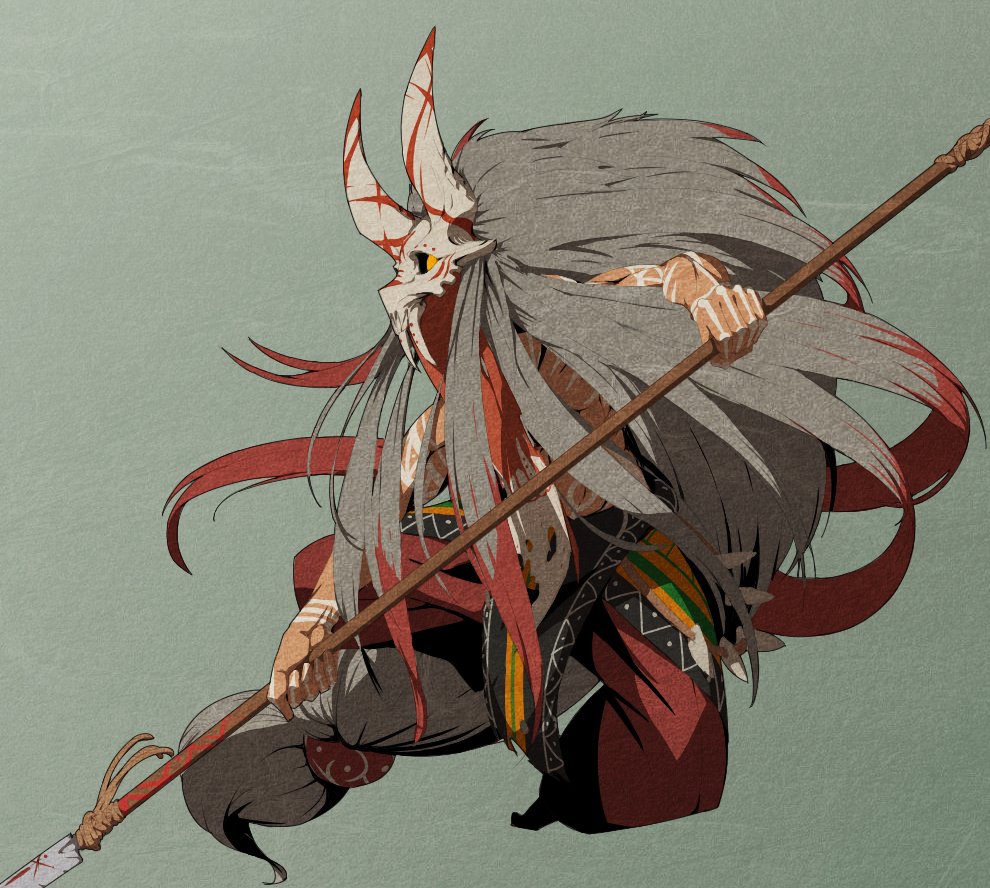
Japanese folklore is full of supernatural beings, and one of the most popular are the Yokai. These creatures are a class of supernatural monsters, spirits, and demons that come in various forms. Some of the most well-known Yokai include:
- Kappa: A river creature with a water-filled dish on its head
- Nue: A chimera-like beast with a monkey’s head, tiger’s legs, and a snake as a tail
Tengu and Other Winged Creatures
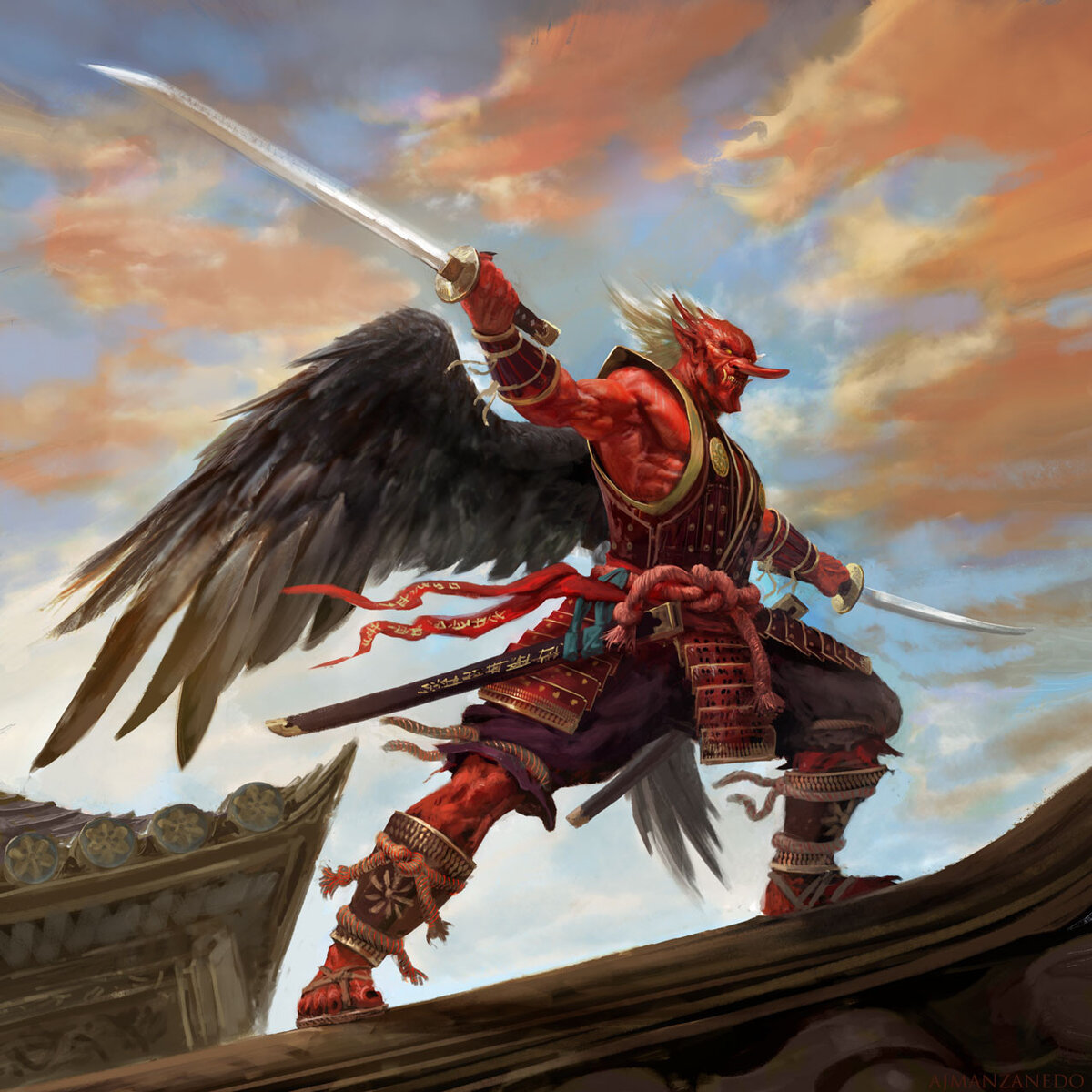
The Daitengu, or Greater Tengu, are considered guardians of the forests in Japanese mythology. They are often depicted with both human and avian characteristics. There are two main types of Tengu:
- Karasu Tengu: These Tengu have crow-like features and are smaller and less powerful.
- Daitengu: These Tengu have human-like features and are considered more powerful and wise.
Other winged creatures in Japanese folklore include dragons, heavenly dogs, and kirin.
Shapeshifters and Tricksters

Shapeshifters are another common theme in Japanese mythology. They often serve as messengers of Inari, the god of rice. Some of the most well-known shapeshifters include:
- Kitsune: Fox spirits associated with intelligence and magic.
- Tanuki: Raccoon dog spirits known for their pleasant and tricky nature.
Other notable creatures in this category include bake-danuki, fox spirits, nekomata, and jorōgumo.
The creatures and spirits of Japanese folklore form an elaborate tapestry that captures the imagination and offers a glimpse into the heart of Japanese culture.
Heroes and Villains in Folklore
Brave Warriors

In Japanese mythology, brave warriors are often depicted as divine figures who embody strength and honor. Susanoo, the Shinto god of the sea and storms, is one such example. He is most famous for slaying the eight-headed serpent Yamata no Orochi, a feat that portrays him as the archetypical hero found in Japanese myth. Susanoo’s story blends elements of children’s cautionary tales and heroic epics, illustrating the courage necessary to protect the innocent.
Another example of brave warriors in Japanese mythology is Yamato Takeru, a prince who was known for his bravery and fighting skills. He was sent on a mission to subdue a rebellion in the eastern part of Japan and successfully completed the task.
Sumo wrestlers also embody the characteristics of brave warriors. Beyond the divine, sumo wrestlers often depict themselves as heroic figures who possess immense size and power. They can be seen as benevolent ogres who use their might for good as they strive for victory.
Cunning Antagonists
Oni and Ogres personify evil with their demonic appearance in Japanese folklore. Typically, they play the role of villains whom the heroes must overcome. Their presence in a story usually involves themes of vengeance and the battle between good and evil.
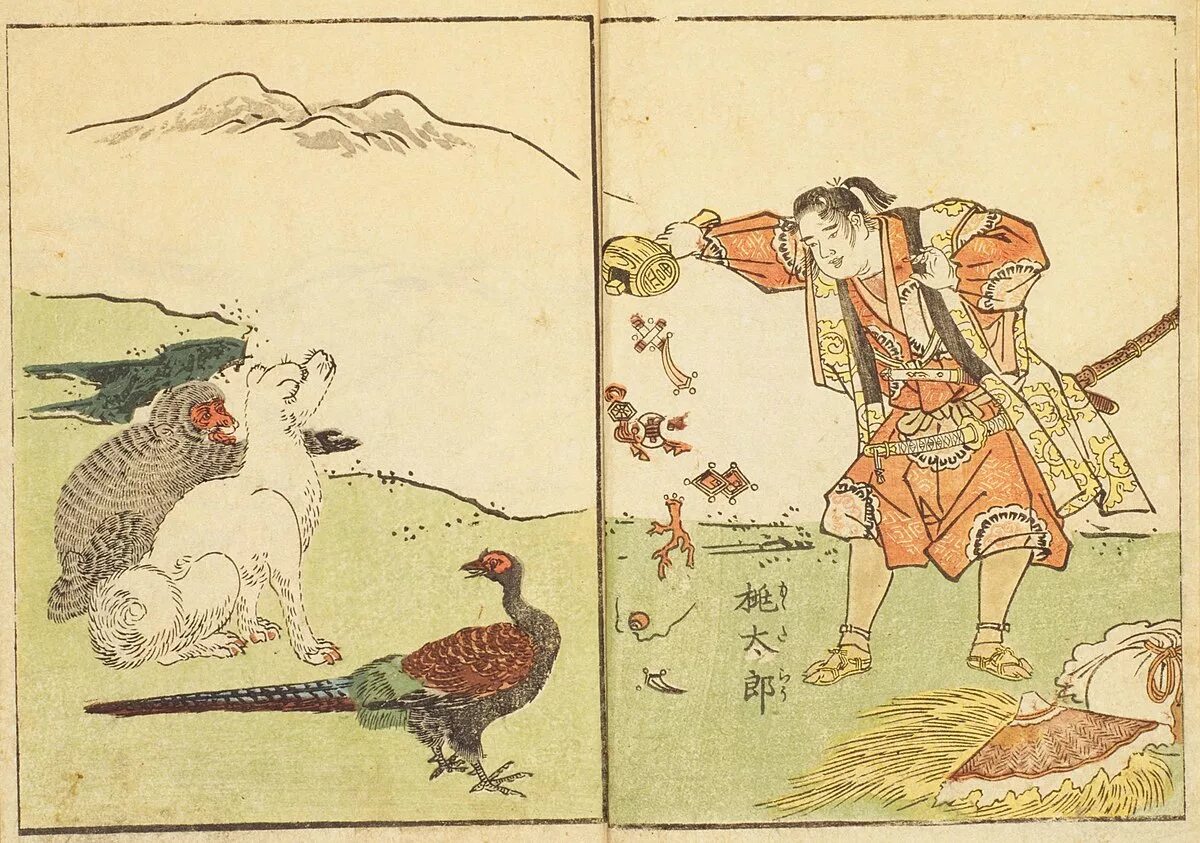
Momotaro, also known as Peach Boy, is a famous hero in Japanese folklore who fought against the Oni. He was born from a peach and raised by an old couple. When he grew up, he went on a journey to defeat the Oni who were terrorizing the nearby villages.
In contrast, some cunning antagonists in Japanese mythology are not necessarily evil. For example, the fox spirit Kitsune is known for its trickery and mischief. It often plays pranks on humans but can also be benevolent and help those in need.
Sacred Places and Artefacts
Mountains and Natural Shrines
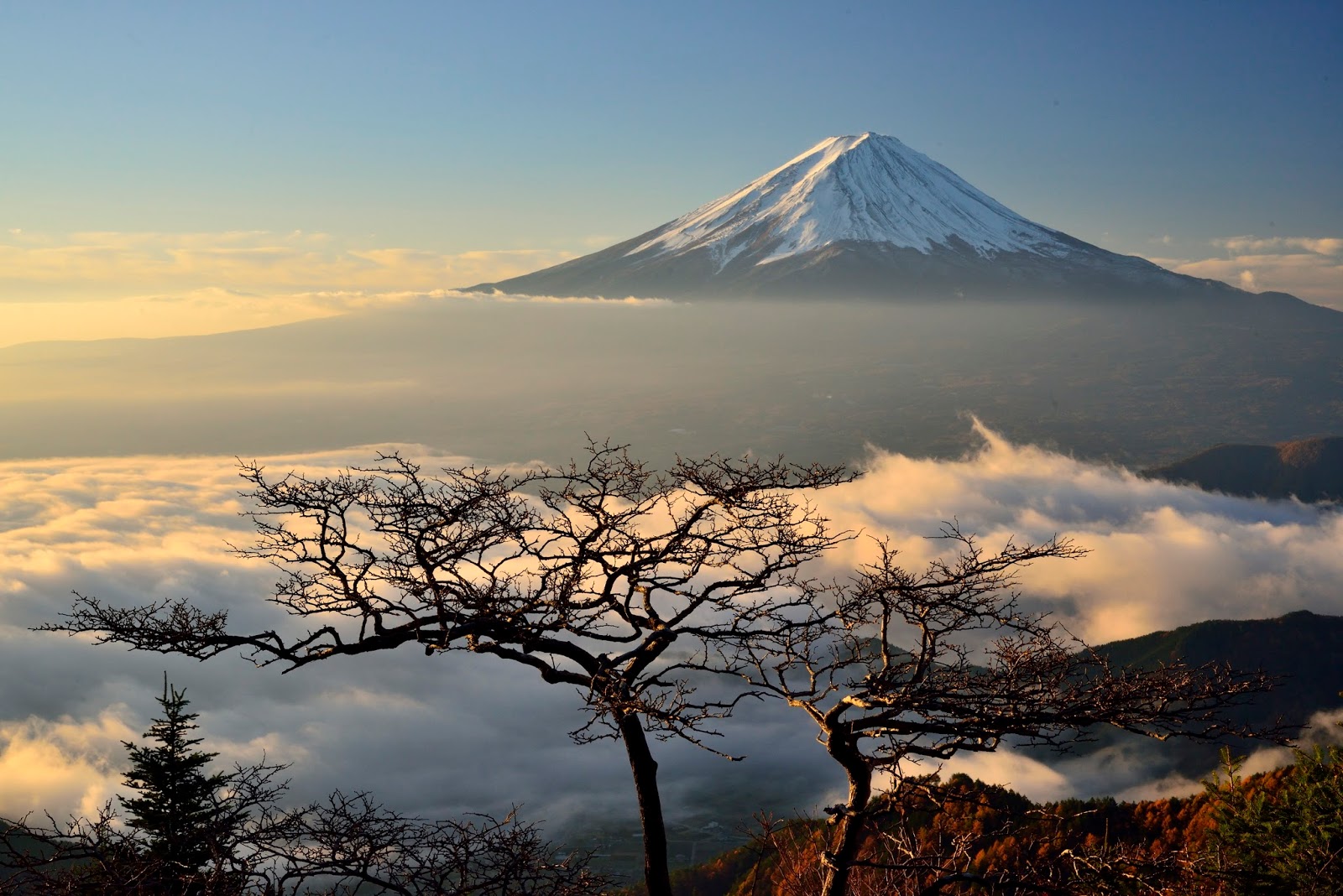
Japan’s landscape is deeply connected to the spiritual world. Mount Fuji, one of the most sacred mountains, is not only a symbol of natural beauty but also a place of religious significance. At the peak, pilgrims seek blessings at Shinto shrines. Similarly, Mount Hiei is an important sacred site, housing the Enryaku-ji temple, which is associated with the heavenly dog and is a UNESCO World Heritage Site. The Tendai sect is historically connected to it, and believers think it houses protective deities.
Natural shrines, nestled in groves or along mountainsides, offer a profound sense of peace and a connection to nature. These places often feature torii gates, marking the entrance to something holy and divine. The Izumo Taisha is a natural shrine that connects to the Kami, or divine beings, and is considered a place where the gods gather annually.
Legendary Objects of Power
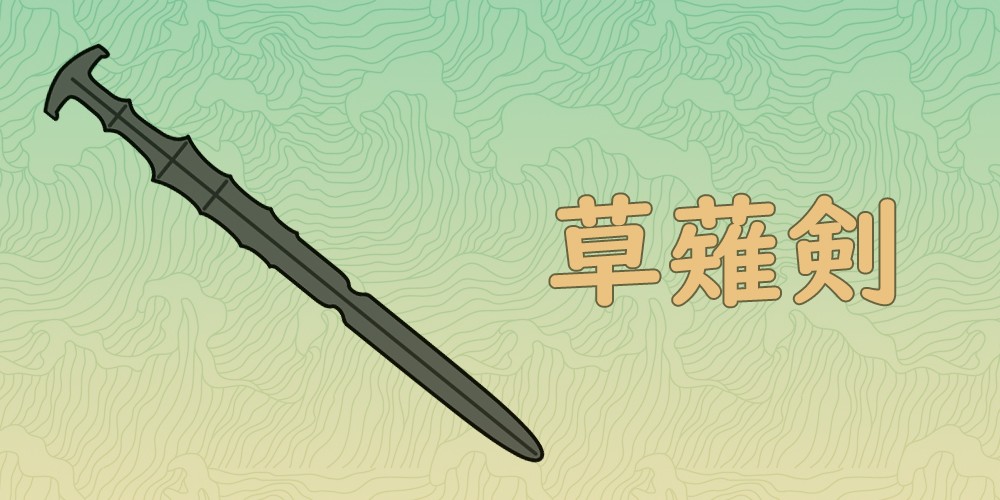
In Japanese mythology, specific legendary objects hold incredible power. The Kusanagi no Tsurugi is a mythical sword that represents one of the three Imperial Regalia of Japan and is symbolic of the virtue of courage. According to legend, the storm god Susanoo discovered this sword in the tail of a fearsome dragon he defeated, linking it to its origins and symbolizing the bravery and strength of Japan’s ancient warriors.
The jewel Yasakani no Magatama and the sword Kusanagi, along with the mirror Yata no Kagami, are the Imperial Regalia. They play a central role in the enthronement ceremonies of Japanese emperors, signifying the divine right to rule. These objects are considered sacred and are kept in the Shishin-den Hall of the Imperial Palace in Tokyo.
Overall, these sacred places and artefacts are deeply intertwined with Japan’s religious and cultural traditions, and they continue to be revered and celebrated to this day.
Cultural Impact of Mythical Creatures
Mythical creatures from Japanese folklore have had a significant impact on Japanese culture, influencing both the arts and modern-day festivities.
Influence on Arts and Media
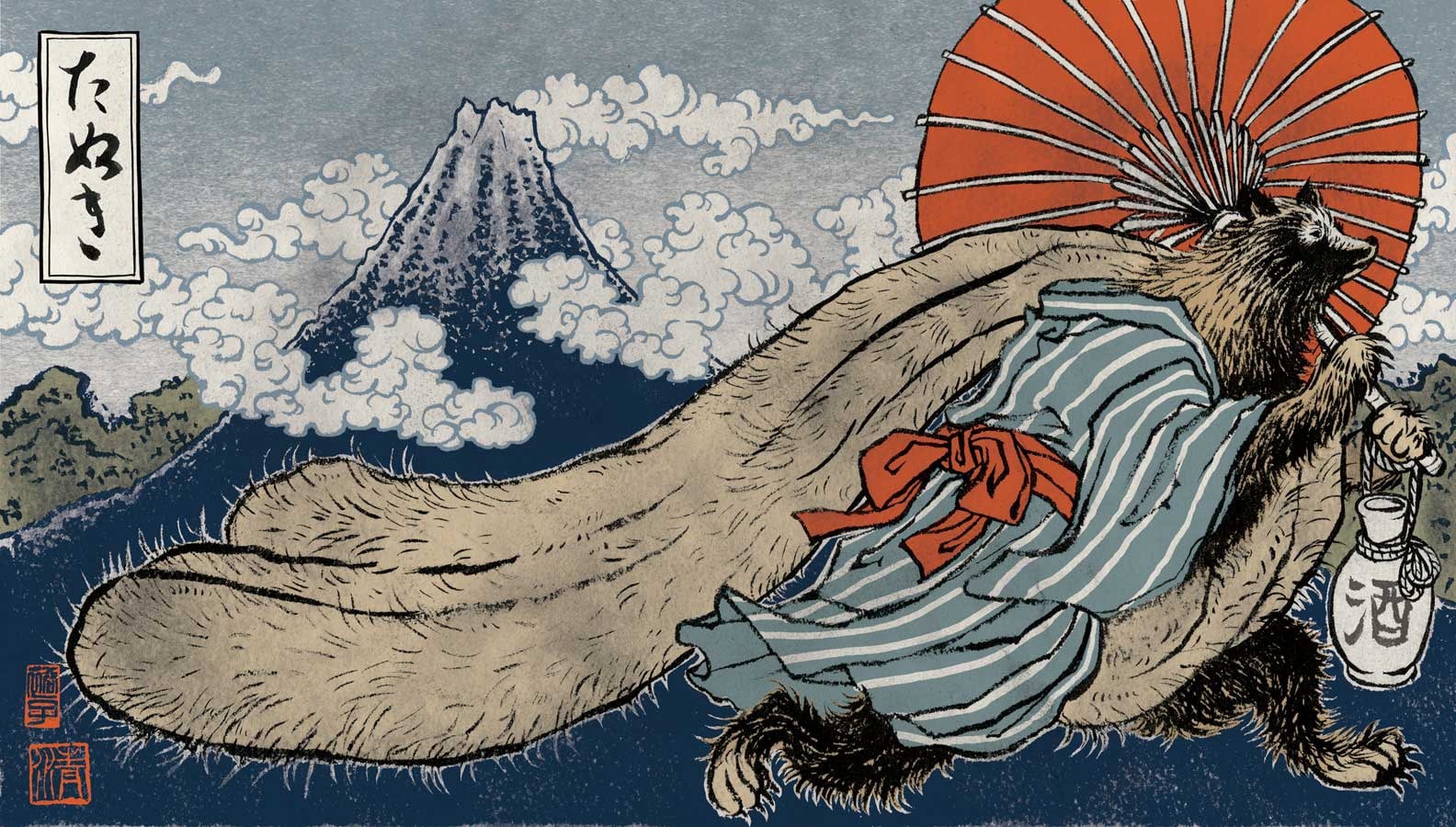
Japanese mythical creatures have inspired various forms of media, including anime and manga. These works often feature creatures such as the mischievous Tanuki and the formidable Tengu. For instance, the anime series Naruto incorporates mythical beasts like the nine-tailed fox into its lore. Classical art has also been influenced by these creatures. Artists like Yoshitoshi have depicted them in traditional woodblock prints, inviting viewers to ponder the mystical aspects of Japan’s cultural heritage.
Mythological creatures continue to appear in modern movies and books, demonstrating how mythology influences modern entertainment. Urban legends often draw from ancient myths, adapting them to contemporary narratives. This shows their enduring cultural significance.
Role in Modern-Day Festivities
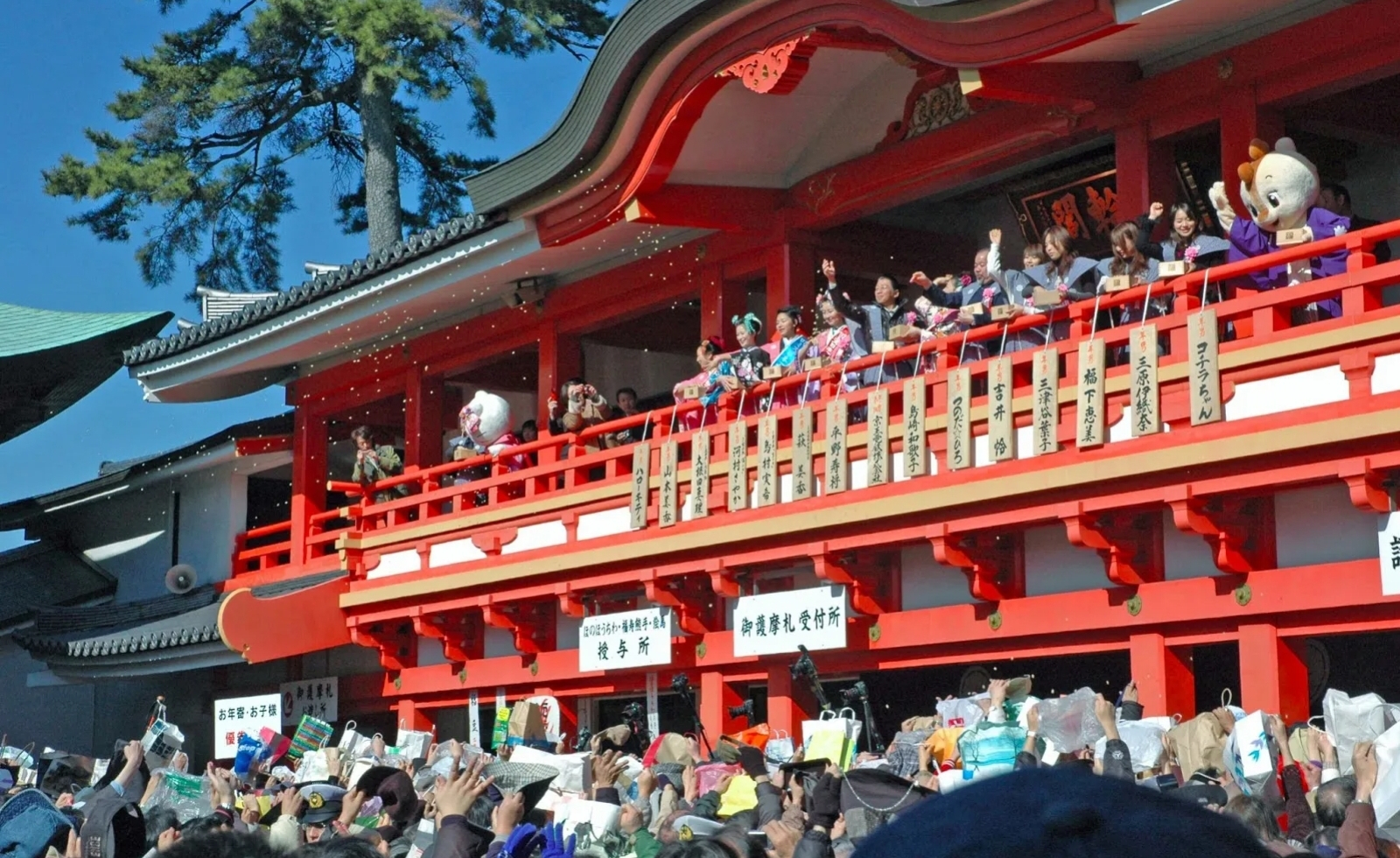
Present-day celebrations in Japan interweave the country’s rich folklore. Festivals like Setsubun highlight how mythical creatures are part of Japan’s celebratory customs. During Setsubun, people throw beans to ward off Oni, evil spirits. This is a look at how modern festivals use mythical creatures to educate and preserve cultural heritage. Lanterns, masks, and parades featuring depictions of yokai (supernatural monsters) are common sights at cultural events. This vibrant connection between Japan’s mythical past and living traditions is often on display, making it clear how much of an impact these creatures continue to have on Japanese culture.
Interactions with Human Society
Protective Spirits and Household Gods

Protective spirits are a category of beings that are revered in Shinto traditions. Kami and Shikigami are examples of such entities. They are believed to guard natural places and sanctified objects. Sorcerers often employ them, directing them to protect or curse as needed.
Supernatural Phenomena and Explanations
Ghostly Apparitions and Hauntings
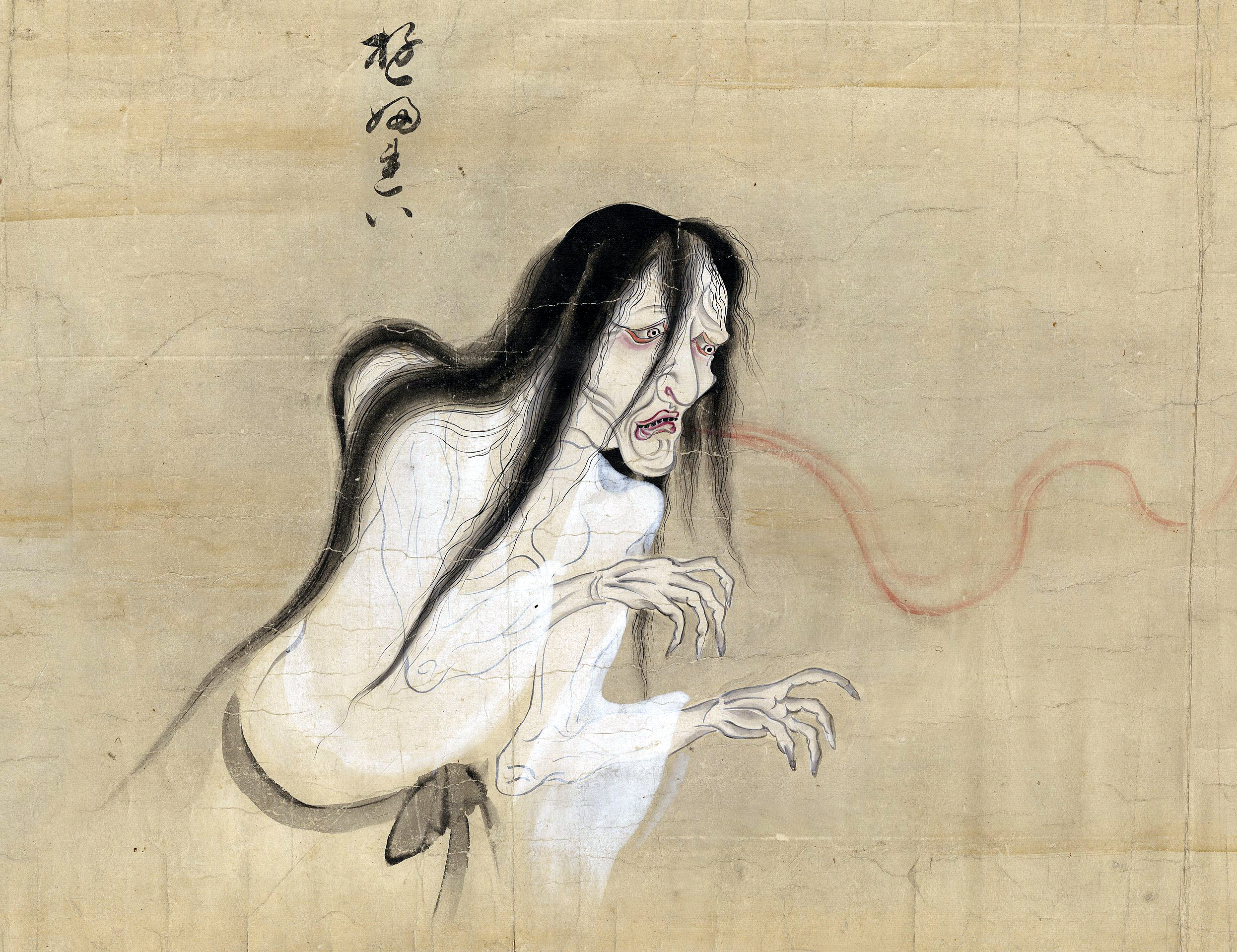
Japanese mythology is full of supernatural beings that personify different aspects of nature and human experiences. Among these beings are yūrei, or ghosts. Yūrei are spirits that are connected to specific locations or circumstances surrounding their death. They often manifest intense emotions like anger or sorrow, and some believe their presence is a reaction to injustices felt in life.
Onryō, a type of yūrei, are vengeful entities seeking revenge. They bring misfortune or calamity to right the wrongs they suffered in life. These beings sometimes cross the boundary between the living world and Yomi, the Japanese underworld.
Some famous examples of yūrei include Okiku, Oiwa, and the yūrei of the Black Hair. Okiku is a yūrei that haunts Himeji Castle, while Oiwa is a yūrei that haunts the Yotsuya district of Edo. The yūrei of the Black Hair is a famous story of a woman who was betrayed by her lover and then died of grief. Her spirit is said to haunt the living, causing them to suffer the same fate as hers.
Japanese folklore is full of stories about ghostly apparitions and hauntings. These stories often reflect natural forces, societal fears, or unexplained phenomena.
Legacy of Japanese Mythical Creatures
Global Influence and Recognition
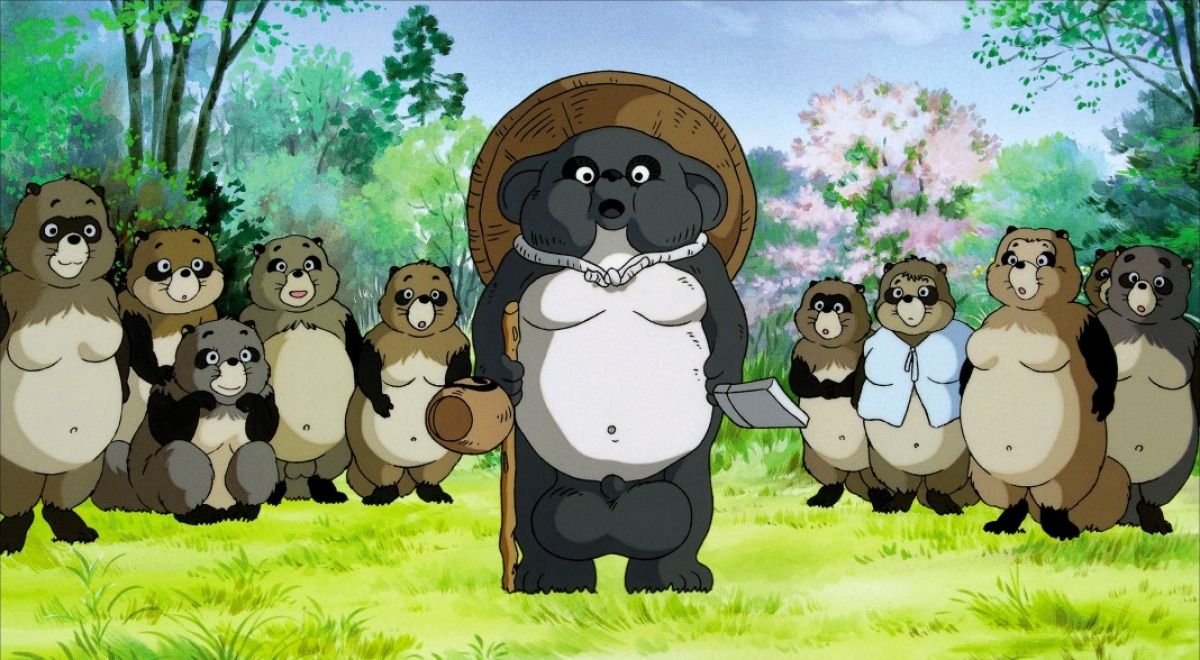
Japanese mythical creatures have left an indelible mark on popular culture worldwide. They are recognized in literature, gaming, and animation. For example, Studio Ghibli movies bring wonder to audiences worldwide, highlighting these creatures. One of the most popular creatures is the shape-shifting Tanuki, which has been featured in Pom Poko movie. These entities amplify the legacy of Japanese myths and legends, broadcasting their stories to a fascinating global audience. The imperial family also recognizes the importance of these creatures in Japanese culture and their continued legacy.
